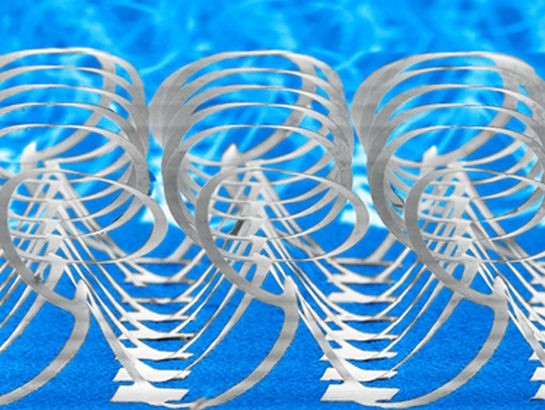New Technique Converts 2D Nanostructures into 3D Forms
| Marco Foronda | | Jan 10, 2015 05:24 AM EST |
(Photo : University of Illinois) 3D microstructures made of silicon created from a concept based on pop-up books
Scientists have discovered a distinctive procedure for geometrically transforming two dimensional (2D) micro/nanostructures into extended 3D layouts by mimicking children's pop-up books.
These complicated 3D micro/nanostructures are prevalent in biology and underpin vital functions in the most fundamental forms of life. Using 3D micro/nanostructures in man-made systems offers fantastic possibilities.
Like Us on Facebook
These forms can be used in energy storage, biomedical devices, metamaterials, microelectromechanical components, photonics and optoelectronics, among many others.
Researchers said these complex structures could one day help scientists electronically control living tissue.
Devices imitating the complex structures found in nature are very difficult to make on microscopic scales. Researcers at the University of Illinois at Urbana-Champaign have developed a simple strategy for manufacturing 3D micro/nanostructures that have flat 2D structures pop-up into 3D shapes.
To assemble these structures, scientists produce 2D patterns of ribbons on stretched elastic silicone rubber. The ribbons are as small as 100 nanometers wide or about 1,000 times thinner than the average human hair. These can be made from a variety of materials, including silicon and nickel.
The tension on the silicone rubber is discharged after the 2D designs are made. The weak points of stickiness shatter and up pops a 3D structure.
Researchers have created over 40 different geometric designs ranging from single and multiple spirals and rings to peacocks, flowers, tables, tents and starfish. Scientists can even arrange patterns with multiple layers.
This strategy is fast, cheaper and can use many different materials used in electronics to build a wide variety of microscopic structures.
In addition, researchers can build many different structures at one time. They can also include different materials into hybrid structures.
The details of the new pop-up 3D strategy were published online in the journal, Science.
Tagspop-up book, 3D technology, 3D Printing, 3D micro/nanostructures
©2015 Chinatopix All rights reserved. Do not reproduce without permission
EDITOR'S PICKS
-

Did the Trump administration just announce plans for a trade war with ‘hostile’ China and Russia?
-

US Senate passes Taiwan travel bill slammed by China
-

As Yan Sihong’s family grieves, here are other Chinese students who went missing abroad. Some have never been found
-

Beijing blasts Western critics who ‘smear China’ with the term sharp power
-

China Envoy Seeks to Defuse Tensions With U.S. as a Trade War Brews
-

Singapore's Deputy PM Provides Bitcoin Vote of Confidence Amid China's Blanket Bans
-

China warns investors over risks in overseas virtual currency trading
-

Chinese government most trustworthy: survey
-

Kashima Antlers On Course For Back-To-Back Titles
MOST POPULAR
LATEST NEWS
Zhou Yongkang: China's Former Security Chief Sentenced to Life in Prison

China's former Chief of the Ministry of Public Security, Zhou Yongkang, has been given a life sentence after he was found guilty of abusing his office, bribery and deliberately ... Full Article
TRENDING STORY

China Pork Prices Expected to Stabilize As The Supplies Recover

Elephone P9000 Smartphone is now on Sale on Amazon India

There's a Big Chance Cliffhangers Won't Still Be Resolved When Grey's Anatomy Season 13 Returns

Supreme Court Ruled on Samsung vs Apple Dispute for Patent Infringement

Microsoft Surface Pro 5 Rumors and Release Date: What is the Latest?










